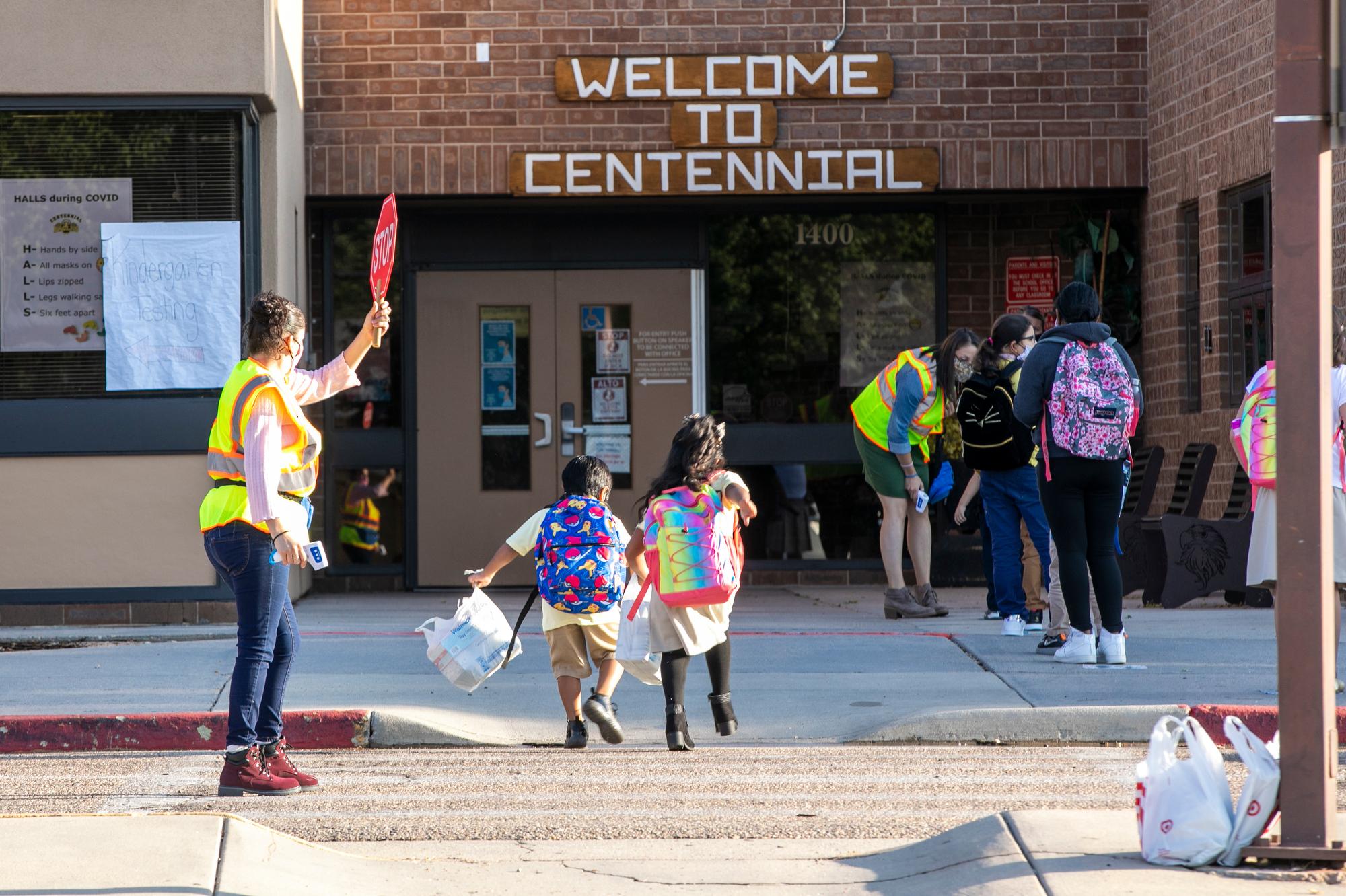
It’s been more than 20 years since Colorado voters amended the state Constitution to create supposedly mandatory funding requirements for public schools.
Turns out, they weren’t so mandatory. For most of that time, the state legislature has failed to meet those goals — year after year, falling hundreds of millions of dollars short and creating legal euphemisms like the “negative factor” and the “budget stabilization factor” as court-approved excuses for the shortfalls.
But next year, Democratic Gov. Jared Polis says the state will finally meet the Amendment 23 funding targets for the first time since the Great Recession.
“The highlight of this budget in many ways is full funding of public schools,” Polis said on Wednesday as he introduced his budget request for fiscal year 2024-25. “This has been a goal for 14 years.”
Overall, general fund spending is set to grow by 6 percent, to about $18.4 billion. The budget reflects state economists’ hope for a “moderately soft landing” for the economy. The next budget year begins on July 1.
How is the state getting rid of the “B.S.” factor?
With the new school budget, per pupil spending would increase by $700 per student, or about 6.7 percent. That’s enough to catch up with the requirements set by Amendment 23, which says school funding is supposed to keep pace with inflation.
After chipping away at its shortfall for years, the state went into this year still lagging behind that requirement by some $140 million.
“It’s a huge milestone, and it's a huge milestone because what we have done is, bit by bit, we have doubled down on our commitment to education,” said state Sen. Rachel Zenzinger, a Democrat and chair of the Joint Budget Committee.
Polis said that additional money could result in smaller class sizes and revived programs such as arts classes.
The proposal even drew some positive comments from the governor’s Republican opponents, though they claimed credit for leading the way by pushing for full funding as soon as this year. During debates over this year’s state budget, Republican lawmakers and others pushed to reduce funding to other programs in order to close the shortfall a year sooner.
“Kudos for the governor for following the law,” said Republican Sen. Barbara Kirkmeyer, also a JBC member. She was referring to the fact that the legislature has effectively already decided that the state should meet its school funding requirements.
In the legislative session earlier this year, bipartisan lawmakers including Zenzinger and Kirkmeyer successfully pressed the governor to increase school funding in the current budget year. And this year’s School Finance Act, as approved by the legislature and the governor, already says the state has to meet the funding requirements in the 2024 budget year — just as Polis is now proposing to do.
“We finally have a legislature that is being held accountable by … the minority saying, ‘Hey, look, this is not a revenue problem. This is a prioritization problem,’” Kirkmeyer said.
Asked for comment on how the increase came to be, Polis spokesman Conor Cahill simply called on lawmakers to “heed his call and fully end the BS factor once and for all in a sustainable way.”
In all, school funding would increase by about $564 million for next fiscal year, but only about half of that will come from the state. Local school districts also may contribute a greater share as they bring in money from rising property tax values.
A recent state law also has forced local school districts to gradually raise their property tax rates until they hit a state-mandated minimum of 27 mills. As that happens, the state will have to give less money to local school districts — freeing up those dollars for use elsewhere in the budget.
The governor’s housing agenda:
Polis also highlighted new spending on his housing agenda, including $100 million he wants to use to incentivize and support denser housing development near transit, jobs and schools, plus $18 million to boost accessory dwelling units by helping local governments to reduce permitting fees.
Republican House Minority Leader Mike Lynch criticized the density-near-transit approach, saying that it focuses too much on urban areas.
The budget also dedicates $10 million for “strategic growth efforts,” such as incentivizing “smart housing development” and to create a “planning framework that aligns state, regional, and local efforts (and) identify quantifiable metrics to track progress over time,” Polis’ budget letter stated.
The budget also includes ongoing housing spending, including more than $300 million required by Prop. 123, which was approved by voters last year.
Transit, tuition and salaries
Among other items in the budget request:
- “Zero Fare” programs that provide free transit rides for youth and for the general public during the summer would see continued funding at $14 million.
- Tuition at public institutions of higher learning would increase at “half the rate of inflation”
- State employees would see across-the-board raises of 3 percent
- The state’s payment rates to non-Medicaid health providers would increase by 2 percent through state programs. Medicaid providers would see their rates grow by anywhere from 1 percent to 2.5 percent. Kirkmeyer criticized the proposed increases for Medicaid providers as “extremely disappointing” because they are too low.
The state is also bracing for federal pandemic funds to finally run out, with Polis’ budget only including about $150 million of remaining American Rescue Plan Act dollars, compared to billions in prior years. And with those funds rolling off, Polis described it as a “tight” budget, with little money left over for new programs and discretionary causes.
Indeed, the Polis proposal leaves only $15 million for the legislature to spend on its own priorities, though lawmakers could negotiate for more.
The total budget, including federal funds and other sources, is $45.9 billion, compared to $43.8 billion under the same measure for the current budget — an increase of about 4.6 percent.
The legislature will debate, amend and pass the budget during its legislative session next year.








